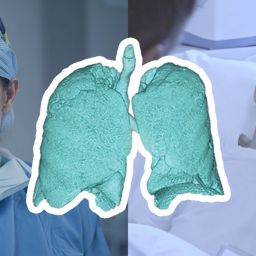A persistent problem with liver and lung allocation is late declines in the operating room due to size incompatibility with transplant candidates. As these organs are vulnerable to extended cold ischemic time, a late decline can result in loss of viability and, ultimately, non-use of an organ.
Fortunately, a trusted technology is now available to your OPO to help eliminate late declines. Known as 3D volumetric rendering, it removes the element of surprise by giving transplant surgeons the ability to evaluate size compatibility faster and more accurately prior to organ procurement.
What is 3D Volumetric Rendering, and How Does It Work?
3D volumetric rendering is a technique used to visualize three-dimensional data in a way that represents the internal structure of an object. In the medical field, it’s the process of taking sections or “slices” of images from CT scans and stacking them together to construct 3D images.
This tried-and-true visual approach has been used in the aerospace, automotive, and engineering industries for many years. While 3D volumetrics is a more recent addition to the medical field, it is quickly becoming a key tool in decision-making, particularly for organ donation and transplantation.
Leveraging 3D Volumetrics for Transplantation
One of the more notable cases involves the Stanford Medicine Children’s Health heart transplant program, where doctors are leveraging 3D imaging software to expand the potential donor pool for children in need of new hearts. (CompuMed had the privilege of supporting Stanford Medicine’s Dr. John Dykes at some of the initial stages of his pioneering efforts.)
While programs like Stanford Medicine have adopted this technique, many transplant programs face challenges to its use, such as urgent access to advanced imaging technology or the specialized training necessary to interpret 3D images.
CompuMed aims to change that. We are proud to be the first provider to make 3D volumetric rendering and its benefits easily accessible to OPOs and their partner transplant centers. By providing 3D-rendered structural models of a donor organ at the time of offering, any transplant program can utilize this information to make more informed medical decisions.
How 3D Volumetrics Differs from Current Methods
As OPOs know, transplant surgeons have a limited amount of time to accept an organ offer. Yet, the surgeon must also ensure the lifesaving gift will fit its intended recipient, considering organ volume, dimensions and other attributes like vasculature size and shape.
Currently, most transplant surgeons rely on an organ/weight combination to estimate organ size. (We’ve all heard the saying, “Your heart is about as big as your fist.”) When a CT is available, the surgeon may also get some basic 2D measurements. This process, however, is time-consuming and can lack accuracy. Additionally, getting more detailed structural data on hepatic arteries, aortic measurements and more is rarely successful, certainly not at the time of offering.
While the lack of 3D data doesn’t result in recipients getting incorrectly sized organs, it has meant that the final decision to accept or decline an organ can typically only be made once the organ is recovered from the donor. If the organ is declined at this point, there is very little time to find a different recipient, and often, the organ is “lost.”
One of the most significant benefits of using 3D volumetric rendering for organ donation and transplantation is eliminating these late declines due to size incompatibility.
How 3D Volumetrics Helps Eliminate Late Declines
When used for a donor’s gift, a 3D-rendered CT scan provides transplant surgeons with the size, dimensions and fit of the organ and allows them to more accurately use the rule-in and rule-out filters in the UNOS matching software.
Additionally, CompuMed’s 3D volumetric rendering services can help transplant programs model the intended recipient in advance, allowing the transplant team to visualize the organ within their patient’s anatomy.
As a result of these increased data-informed decision-making capabilities, transplant surgeons can skip the guesswork and go straight to the point of knowledge, enabling them to be more confident in their decision to accept an organ for transplant and less likely to issue a late decline in the OR.
Additional Benefits of 3D Volumetrics
While eliminating late declines due to size incompatibility is a significant benefit of 3D volumetrics, the technology also offers several other advantages for OPOs, donor heroes and transplant centers.
Ready to Learn More about Our Services?
Whether you are new to CompuMed or one of our valued partners, our team is here to provide more information about 3D volumetric rendering. Contact us today to learn how this technology can benefit your OPO and the communities you serve.



